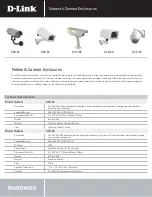
4
ELECTRICAL INSTALL ATION
SETUP
Hazardous Location Precautions:
Observe the regulations listed in the NEC (USA) or CEC
(Canada) regarding equipment in hazardous locations
when installing the hazardous location models of the
Vibra
Rod
™ level sensor in hazardous classified loca-
tions. Wiring must be performed according to the authority
having site jurisdiction and is the sole responsibility of the
installer to ensure such.
It is important to note that the hazardous location mod-
els are certified with two protection concepts: The probes
and wires from them to the enclosure is an intrinsically-
safe circuit but is still Haz-Live. The enclosure and elec-
tronics within are not intrinsically-safe and protection is by
dust-ignition proof enclosure.
Factory Wiring:
The probe wires internal to the housing are connected to the
frontside of the PCB. DO NOT alter this connection. Doing so
will likely cause improper operation of the sensor and likely per-
manent damage. (See Figure 7)
Permanently Connected Equipment:
Disconnecting devices shall be included in the system
installation. In installations where multiple circuits are
used (i.e. independent circuits for power input and relay
output), individual disconnects are required. The discon-
nects shall be within close proximity of the equipment,
accessible to operators, and marked appropriately as the
disconnect for the associated circuit. Assure the discon-
nect ratings are appropriately sized to the circuit protected
(See Specifications). The MAINS power that connects to
the sensor MUST provide circuit protection and NOT
exceed 30A total.
Circuit Separation
(Standard version only)
:
Two cable entry locations are provided to aid in maintain-
ing separation of “hazardous live” (typically mains volt-
ages such as 115VAC and 230VAC) and limited circuits
(typically control voltages less than 30Vrms or 42.5VDC).
However, since the
Vibra
Rod
sensor’s single wiring com-
partment can not absolutely protect against physical con-
tact between multiple circuits, it is required that all wiring
used must have an insulation rating of 300V minimum,
and a temperature rating of 176˚ F (80˚ C) minimum.
Protective Earthing:
Each
Vibra
Rod
level sensor is provided with a “protective
conductor terminal” which shall be terminated to the local
earth ground potential of the facility to eliminate shock
hazard in the unlikely event of internal insulation break-
down. Select wire size that can carry in excess of the sum
of all circuits maximum amperage.
1)
Remove the housing cover to access the terminal
blocks and operating mode switches. All wires must be
routed through the conduit openings.
2) Power Input:
(See Figure 7) The
Vibra
Rod
sensor is
provided with a HI / LOW voltage, AC/DC universal
power supply. If using a DC power supply, polarity is
irrelevant.
3)
Do not remove the green wire from J1 MAINS terminal
because it is an internal connection. For grounding the
unit, either use the grounding screw terminal on the
outside of the housing or use the internal grounding
screw terminal on the circuit board (J1 MAINS). The
earth ground screw should be connected to a quality
"ground" to eliminate shock hazard.
4) Output Contact Connections:
The SPDT relay con-
tacts can be used to indicate whether or not material is
being detected by the sensor within the vessel. These
outputs are also influenced by the setting of the Fail-
Safe switch (See Setup). The output contact(s) can
be used to switch high voltage/high current loads as
listed in the Specifications. Whenever possible, use an
independent voltage source to operate the loads.
Select wire size that can deliver suitable voltage and
current for the application. Follow all electrical codes
and use proper wire gauge size. Tighten cable glands
as well as housing cover after installation to ensure
proper sealing for “Type 4X” environmental protection.
Conduit Entries
: Conduit entry threads should be
lubricated with a material such as lithium grease to
ensure water ingress protection required to maintain
the Enclosure “Type 4X” rating.
-
/2:
)
6
+,
& % $
6(
1
6
-
)
-
-
-
/1(8
1&&2012
67$786/('V
)$,/6$)(
6(/(&725
6(16,7,9,7<
6(/(&725
)$725<352%(
&211(&7,21
'2127$/7(5
)$&725<&211(&7,21
'2127$/7(5
Figure 7
Complete set-up of the
Vibra
Rod
™ is accomplished sim-
ply by adjusting the sensitivity and fail-safe settings. Each
application can be adjusted independently for optimum
operation.
Material Density:
The SENSITIVITY selector should be set in accordance
with the density of the target material:
Position A, high sensitivity. For materials with density over
10.0~12.5Lbs/Ft
3
(160~200kg/m
3
). Recommended for
loose and light materials, greatest sensitivity of detection.
Position B, medium sensitivity position: For materials with
density 12.5~15.6Lbs/ft
3
(200~250kg/m
3
). Recommended
for modest density materials.
Position C, low sensitivity position: For materials with den-
sity 18.7~21.8Lbs/ft
3
(300~350kg/m
3
). Recommended for
thick and heavy materials, least sensitivity of detection.
If the material to be sensed can potentially form heavy
deposits on the probe, selection "LOW sensitivity"
(Position “C”) should be chosen. This will provide addi-
tional immunity to product buildup while still enabling the
circuit to sense the presence of material.
AC
DC + -
FACTORY PROBE
CONNECTION
(DO NOT ALTER)


























